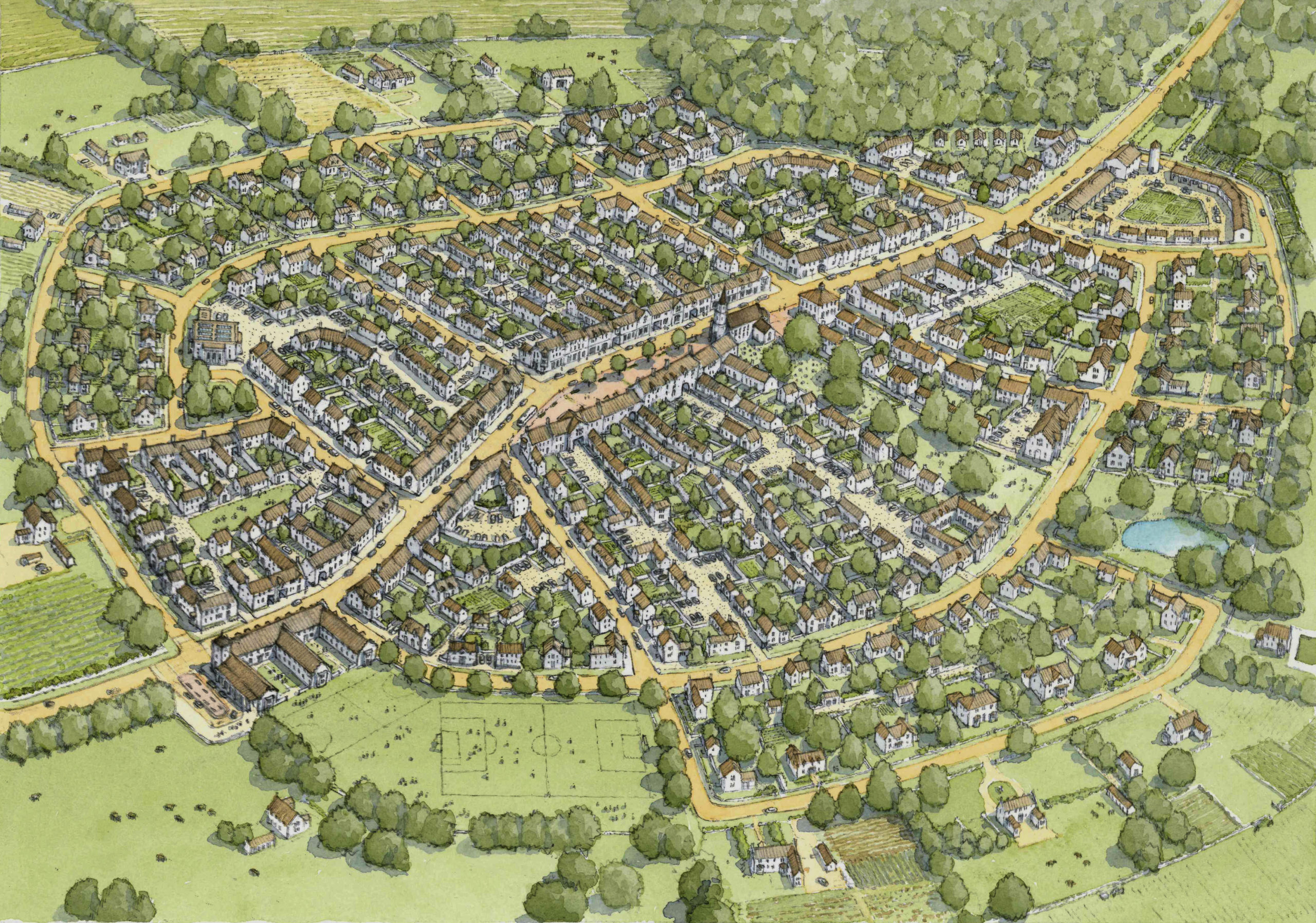
New Urbanism is a planning and development approach based on the principles of how towns were built over centuries: walkable blocks and streets, housing and shopping being placed in close proximity, and accessible public spaces. In short – human-scaled urban design.
The principles, articulated in the Charter of the New Urbanism, were developed to offer alternatives to the sprawling, single-use, low-density patterns typical of post-WWII development, which have been shown to inflict negative economic, health, and environmental impacts on communities.
These design and development principles can be applied to new development, urban infill and revitalization, and preservation. They can be applied to all scales of development in the full range of places including rural Main Streets, booming suburban areas, urban neighbourhoods, dense city centres, and even entire regions.
Villages, towns, and cities consist of neighbourhoods designed around a five-minute walk from centre to edge.
New Urbanist streets are designed for people—rather than just cars—and accommodate multimodal transportation including walking, bicycling, and driving. We believe in providing squares, walkways, cafes, and porches to host daily interaction and public life.
Great design is not useful if it can’t be built. New Urbanists work with and include production builders, small developers, traffic engineers, appraisers and financial institutions, public officials, citizens and others with influence over the built environment to come up with implementable solutions.
The size and shape of a plaza will help determine whether it is consistently alive with people or windswept and vacant. The organization of buildings in a neighbourhood will help establish its character. Combining appropriate design elements makes places that are greater than the sum of their parts.
All scales, from the metropolitan region to the single building, are related. A building that is connected to a transit stop will help the region function better, and well-organized region benefits the buildings within it. Streets that rely only on engineering tend to move automobiles and little else; all disciplines related to the built environment must work together to create great places.
The walkable, vibrant, beautiful places that New Urbanists build work better for businesses, local governments, and their residents. Anyone that works to create, restore, or protect a great place can join in the New Urbanism movement.